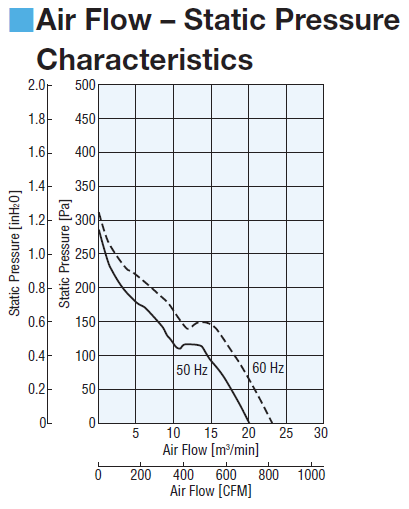There are key considerations to consider when selecting fans, think of the fans we use everyday in our laptops and what could drive these choices.
Do you need a lot of pressure or a lot of flow? Is it important in your application to maintain a particular pressure? (CFM vs static pressure)
From here you can decide what basic form factor you might want to go with. Blowers are good for higher static pressure applications and tubeaxial is good for moving lots of air quickly. From here you can further downselect fans by comparing fan curves (pressure vs flow) to see whether your fan can meet your specific requirements.
If you’re to think of the key dials to select when choosing a fan, they can be best summarized through these criteria:
- Airflow: How much air can the fan actually push? Typically listed in cubic feet per minute (CFM) or meters^3/second
- Static Pressure Rating: Think of this as the fan’s ability to overcome resistance to flow. If you have lots of air restriction, fans with higher static pressure ratings can withstand the flow resistance.
- Operating Voltage: Most fans are DC powered at 5V, 12V, or 24V.
- Form Factor: Thickness and length/width dimensions.
- Noise: How many decibels is the fan at max power.
- Efficiency: How much wattage does the fan draw at your rated airflow application?
- Operating Conditions: Different types of fans can push or pull air, and even direct air from one direction to another! One example is with centrifugal blowers in Macbook laptops.
All of the parameters above can be interpolated from the provided fan datasheet. Regarding static pressure, it’s best to empirically test with the ducting shape you have designed in place to determine what static pressure drops will be encountered.
Below is a common example of a CFM vs. Static Pressure graph you’ll find listed in datasheets:
Great points from @jiggs regarding types of fans to choose from and general applications.
